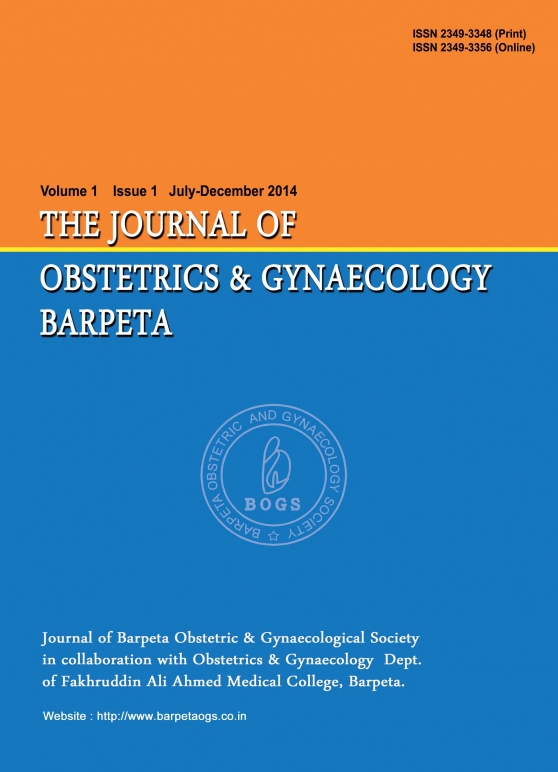
The New Indian Journal of OBGYN. Epub Ahead of Print
Study of intrapartum cardiotocography and its correlation with perinatal outcome in high risk pregnancy
Reenu Markam, Vineeta Ghanghoria
ABSTRACT
Background: Use of an intrapartum cardiotocography (CTG) has increased in last few decades. Consequently, there is a considerable decrease in the overall perinatal mortality and morbidity. Today CTG is a first line investigation for antepartum and intrapartum foetal assessment and to detect intrauterine hypoxia. Aim: To study various patterns of intrapartum CTG in high risk pregnancy and to correlate the results with perinatal outcome. Methods: Prospective observational study was conducted on 215 high risk pregnant women admitted in department of obstetrics and gynaecology, Netaji Subhash Chandra Bose Medical College and Hospital Jabalpur from March 2018 to August 2019. Results of CTG were designated as reactive or non-reactive and perinatal outcome was assessed in the form of liquor status, Apgar score at one minute and five minute, birth weight, neonatal intensive care unit (NICU) admission, duration of NICU stay and perinatal mortality. Results: Out of 215 high risk cases, patients with reactive CTG were 88.37% (n=190) whereas those with non-reactive were 11.63% (n=25). Most common risk factor was hypertensive disorders of pregnancy (28.37 %) followed by post datism (15.35%), intrauterine growth restriction (IUGR) (12.56%), anaemia (10.23%), oligohydramnios (6.98%), previous LSCS (4.65%), Rh negative (3.72%) and GDM (1.4%). In non reactive group 9 (12.16%) newborn died. Mortality rate was 4.18%. On univariate predictive analysis of CTG for various outcomes like meconium stain liquor, mode of delivery (NVD vs LSCS), Apgar score at 1 minute (<4) and foetal outcome (healthy or dead) shown to have significant predictive value. While Apgar score at 5 minute, NICU admission rate andduration of NICU stay cannot be predicted with statistical significance. There was no maternal mortality observed. The proportion of healthy neonatal discharge was significantly higher in reactive group of patients (p<0.0001). Conclusion: Cardiotocography is a simple, easily available tool, which can be used to improve perinatal outcome in terms of neonatal morbidity and mortality by initiating early interventions following early detection of fetal hypoxia.
Volume 1 Issue 2
Volume 2 Issue 1
Volume 2 Issue 2
Volume 3 Issue 1
Volume 3 Issue 2
Volume 4 Issue 1
Volume 4 Issue 2
Volume 5 Issue 1
Volume 5 Issue 2
Volume 6 Issue 1
Volume 6 Issue 2
Volume 7 Issue 1
Volume 7 Issue 2
Volume 8 Issue 1
Volume 8 Issue 2
Volume 9 Issue 1
Volume 9 Issue 2
Volume 10 Issue 1
Volume 10 Issue 2

